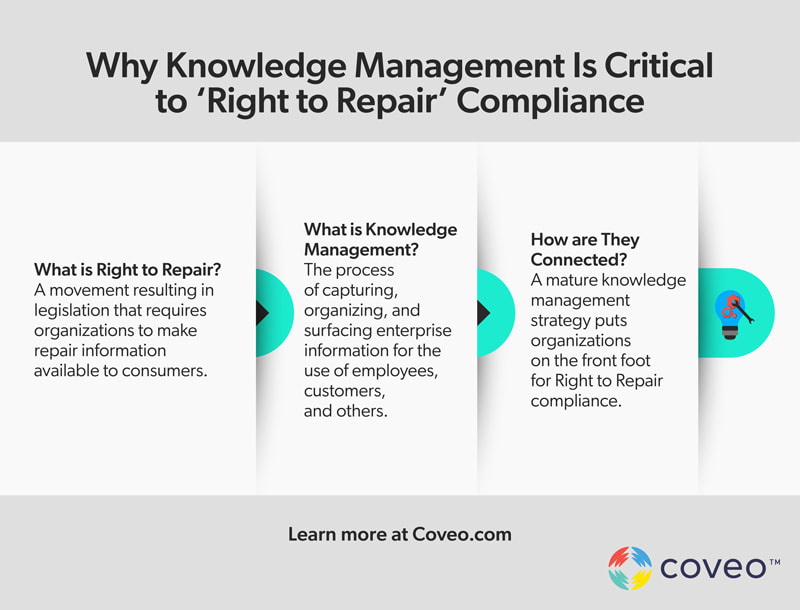One of the hot topics of 2023 is the concept or movement known as “right to repair.” It’s not a new concept, though. You own your car. You can take it to any mechanic if it needs repairs. But that’s not how it always was. Used to be that you’d have to go to a dealership for those repairs. But after decades of work to get right to repair legislation passed, you can take your car to an independent repair shop or fix it yourself.
Lawmakers are now trying to push for the same legislation for other products, everything from electronics to medical equipment to tractors (for example, John Deere farm equipment)! For that to happen, a manufacturer would have to provide customers, as well as independent repair shops, with access to not only service manuals and other product or service information but also affordably-priced tools and replacement parts.
There is still plenty of pushback on right to repair laws, i.e., not everyone is convinced that it will benefit consumers (and/or manufacturers). But with the recent enactment of the Right to Repair Act in New York, the winds are blowing in a positive direction.
As a result, your customers are going to need information — and you will need knowledge management to meet that demand. You can resist, or you can get on board and provide them with the information that they need. Doing the latter will certainly ensure that you deliver a great customer experience, garner recommendations, and, ultimately, earn brand loyalty.
Let’s dig into a bit of background on the law and then how and why your knowledge management strategy becomes critical to ‘right to repair’ compliance.

Who’s in favor of removing repair restrictions?
Without a doubt, consumers support ‘right to repair.’ It means they have flexibility and choice, but it also means they’ll save money. Others in favor of the law also cite less or reduced electronic waste. Rather than throwing away the products because they can’t afford the repairs, consumers will get them fixed and continue to use them for years to come. Kyle Wiens is one example, having founded iFixit to do just this.
And, consider this: oftentimes the replacement costs less than the repairs.
Who’s against it?
It’s probably not surprising that manufacturers aren’t in favor of the concept. You likely want to be the only one to fix your products (or an authorized repair provider), allowing you to set the price for parts and service. You might be concerned about your intellectual property and trade secrets. There’s also the potential of third parties copying your products as a result of providing a repair manual.
In California, for example, while consumers and many lawmakers supported the right to repair bill, lobbyists jumped in and kiboshed the effort, citing consumer safety and privacy as their primary concerns.
“Consumers, businesses of all sizes, schools and hospitals need to know that the people who repair their products will do so safely, securely and correctly,” Dylan Hoffman, TechNet’s Executive Director of California and the Southwest, said in a statement. “So-called ‘right-to-repair’ bills would result in serious harm to consumers’ privacy and safety by providing sensitive security information and equipment to anyone who wants it, regardless of whether they’ve been trained, certified, or vetted.”
What’s the status of right to repair laws?
In the United States, right to repair laws are primarily being discussed and passed at the state level (check out New York’s Digital Fair Repair Act, signed by Governor Hochul). There are currently 34 states that have introduced right to repair laws for digital/electronic equipment. At the federal level, the president has directed the Federal Trade Commission to limit manufacturers’ ability to restrict independent repairs. Several European countries have enacted right to repair laws.
What are the law’s requirements?
Right to repair laws make for a great consumer experience. Think of the benefits and the goodwill when customers have the flexibility to choose how or where they get their products repaired – and you’ve provided them with the tools and the information to do just that.
According to Repair.org, who advocates for a competitive repair market, independent repair providers (and individuals) need access to the same things that dealers and their service folks have, including:
- Providing repair information like manuals, schematics, and software updates; software licenses (EULAs) shouldn’t limit support options; and contracts should clearly state what’s included in the sale.
- Making parts and tools, including diagnostic tools, available at affordable prices.
- Allowing unlocking, adapting, or modifying a device so that the customer can install custom software.
- Designing products in such a way that it doesn’t require a college degree in that product to repair it.
How can you prepare?
As mentioned earlier, your customers will need information, which means you’ll need a knowledge management strategy to meet the demand and to deliver a great customer experience.
As part of that strategy, you’ve got to work with your customers. Understand their needs and help them solve problems. Make it easy, seamless, and frictionless. Those are customers’ expectations about the experience today. Don’t complicate matters when there’s no reason to.
At the crux of the matter is that businesses must provide customers with information. One obstacle, although a large one, is that organizations may have information spread across many disparate sources, from knowledge bases to websites to internal storage and even within employees’ heads. Surfacing the right knowledge to produce an answer to a question is often harder than it seems. But choosing the right technology platform can help relieve this burden to benefit customer self-service options — whether consumers or an independent repair facility — and benefit employees, too.
What you need is unified search.
How can unified search support knowledge management?
First off,knowledge management is a discipline comprised of various technologies, processes, and strategies to capture, distribute, and effectively use existing information to enhance learning and performance. By leveraging the collective knowledge and expertise within the organization, businesses can achieve significant competitive advantages and improve overall performance.
Unified search allows customers to search for information across multiple sources using a single search query. Instead of having to search each source individually, unified search brings together results from multiple sources and presents them in a single, cohesive search results page. This makes it easier for customers to find the information they’re looking for, since they’re not spending time searching multiple sources or switching between multiple search interfaces.

Unified search benefits both customers and employees. Let’s take a look at how they impact both.
How does unified search benefit customers?
Some of the many and varied benefits to customers include the following, all of which improve the overall customer experience:
- Better customer service: When your agents have access to complete and detailed information, they can provide more accurate and timely responses to customers.
- More self-service options: Your self-service portal or site allows customers to research and access information and resources themselves, at their own convenience. This can lead to quicker issue resolution.
- Increased product knowledge and understanding: This ties in directly with the right to repair laws. By providing customers with product information, how-to guides, and other resources, you’re helping customers understand, use, and repair products themselves and in a more timely manner.
- Increased trust and loyalty: When customers have access to high-quality, thorough, relevant, and accurate information, they’re more likely to trust – and be loyal to – your brand.
- Time and cost savings: By allowing customers to answer their own routine inquiries or to repair products themselves, you’re helping them save money and be more efficient.
- Better decision-making: By having access to complete, relevant, and accurate information, customers can make more informed decisions about their next best actions.
How does unified search benefit employees?
Similarly, unified search improves the employee experience by assisting employees with their jobs.
- Increased efficiency: By having a centralized repository of information, employees can easily access the details they need to do their jobs, thereby reducing the time and effort needed to find and use relevant information.
- Better collaboration: Unified search with collaboration and communication tools that allow employees to work together more effectively and to share information and expertise more easily. They can help each other.
- Greater productivity: When employees collaborate and share information across teams or departments, information silos are broken down, improving both productivity and knowledge alignment across the organization.
- More learning and development opportunities: With access to all of this great information, including instructional materials, best practices, and other resources, employees can further develop their own skills and improve their performance.
- Better decision-making: Employees can make more informed decisions based on the best available data about products and services.
- Increased job satisfaction: When employees have access to the information and resources they need to do their jobs efficiently and effectively, they can experience higher levels of job satisfaction and engagement. Not having access to these resources is a game changer and a major source of dissatisfaction, as noted in my last article, Quiet Quitting: Why It Doesn’t Need to Happen.

How does that translate to right to repair?
Those are all solid benefits for both customers and employees, and they translate well to the right to repair laws because those laws then put the power into customers’ hands to get their products repaired however and wherever they choose.
Customers can use unified search in the following ways to assist them with repairing products:
- Get access to repair guides and manuals.
- Resolve their own issues through searching for information on common problems and identifying troubleshooting steps.
- Receive technical support via online chat or ticket-based systems to help them with more complex repairs.
- Get information about replacement parts, including where to purchase and how to install them.
- Get access to video tutorials that demonstrate repair procedures, making it easier for customers to understand and complete repairs.
By providing customers (and employees) with easy access to the information and resources needed to repair products, unified search can help improve the customer experience, leading to satisfaction and retention – a long-term success strategy for your business.


